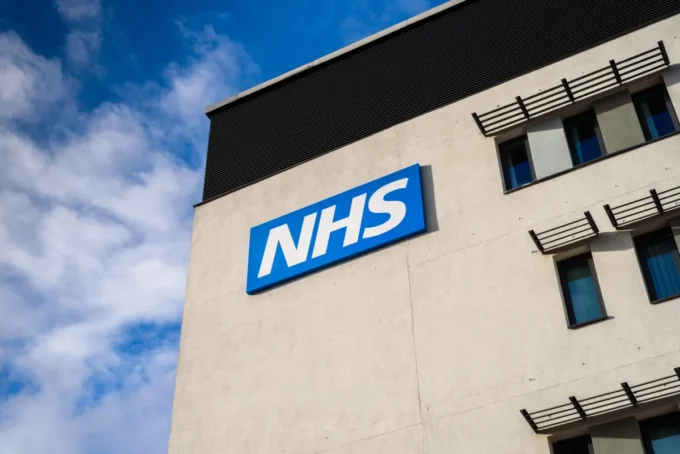The National Health Service is a core part of the United Kingdom’s culture. Formed following World War II, this public institution was created to ensure everyone equal access to healthcare no matter their wealth or status. For decades, the NHS operated smoothly and effectively, but in recent years clinical negligence claims have been on the rise as the institution struggles with staffing issues, a backlog of patients, and financing – all exacerbated by the global Covid-19 pandemic.
What is clinical negligence?
Clinical negligence is a particular aspect of medical malpractice.
Medical malpractice is when harm is caused to a patient due to a healthcare professional deviating from their expected standards of care. Clinical negligence, therefore, refers specifically to errors or omission made in conjunction with medical treatment.
Examples of clinical negligence include misdiagnosis of conditions, prescribing the wrong medicine, operating on the wrong body part, or leaving a foreign object in the body after surgery.
Clinical negligence in the NHS

Each year, the NHS receives more than 10,000 new claims for compensation for clinical negligence, with some claims taking over a decade to come to a resolution.
In the last decade, damages paid by the NHS as a result of medical malpractice soared from £900 million to a shocking £2.2 billion per year. The estimated total cost of outstanding compensation claims was £83 billion at the beginning of 2020, and worryingly this is only on the rise. In Northern Ireland alone, money spent on medical negligence cases doubled to £40 million in the 2021-2022 financial year.
Typical clinical negligence claims against the NHS include failing to identify serious illness such as cancer, being given incorrect medical advice, and ‘never events’ like operations on the wrong organ due to miscommunication. Most recently, the NHS has made news headlines for maternity failings: poor care is reported to have caused hundreds of incidents of death or brain damage in babies over the last two decades.
The cost of these claims, which includes both patient pay-outs and legal fees, is a huge proportion of the budget for NHS services. Continuously diverting money away from the frontline will only intensify the problem as it prevents funding from being used to fix the core issues.
Why are clinical negligence claims on the rise?

There are many reasons why increasing numbers of people feel that they have grounds to make a medical negligence claim against the NHS. In combination, these reasons have driven the cost of clinical negligence in the institution to unsustainable levels.
Reduced funding
While it is true that healthcare spending has increased almost year-on-year since the NHS was established, between 2010 – 2020 this increase was much lower than the long-term average. This means that in recent years the funding for the NHS has fallen short and not kept pace with demand. Part of this lies in political parties wanting to keep taxes down following the 2008 financial crash.
Staff shortages
At the beginning of this year, one in ten posts in the National Health Service was vacant. This statistic highlighted that the United Kingdom currently has fewer doctors and nurses than many of its Western European counterparts. As the NHS was staffed by a significant proportion of people from Europe and beyond, the recent staff shortages are partly due to the UK voting to leave the European Union in 2016. Limited staffing means longer wait times for patients and exhaustion for medical professionals, both of which contribute to preventable harm being caused.
Aging population

It is no secret that people are living longer. Developed countries across the globe are learning how to cope with an aging population that is naturally putting more and more pressure on medical services. Older people typically have more ailments than those who are young, and even those lucky enough to stay fit into later life often require some form of professional healthcare towards the end. Put plainly, the aging population in the UK is exacerbating shortages – of funding, facilities, and time.
Pandemic pressure
No country in the world was prepared for the global Covid-19 pandemic. The speed at which the virus spread surprised all international communities, and huge amounts of money was required to put in place the necessary health & safety measures needed to tackle Covid-19. This included manufacturing and transporting PPE, developing and distributing vaccines, and treating patients. A knock-on effect of Covid-19 was a delay in diagnoses and treatments due to limited appointments and hospital space, both of which caused a huge surge in clinical negligence claims.
Industrial unrest
In 2024, the UK has also experience industrial unrest across many of its sectors. Junior doctors and nurses have been some of the most prominent people out on strike, alongside teachers and public transport providers. These strike days, planned to raise awareness of the challenges the NHS is facing, caused further delays to treatment. It also risked substandard care being provided in the short-term which again was fuel to the fire for clinical negligence claims.
Solving the problem of NHS clinical negligence

The UK government is well aware that the cost of clinical negligence claims to the NHS is unsustainable. One of the major problems is as out-of-date legal system that involves enormous lawyers fees in addition to the cost of the claims. This system is also slow, with claims taking an average of ten years to be settled.
In an effort to solve the problem, in January 2022 the UK government proposed a new cap on legal costs with a view to saving the NHS up to £500 million over the next decade. This was propositioned alongside a new streamlined system that would significantly speed up the claims process. It is a long road ahead, but hopefully over the next ten years clinical negligence claims made against the NHS will be under control.








